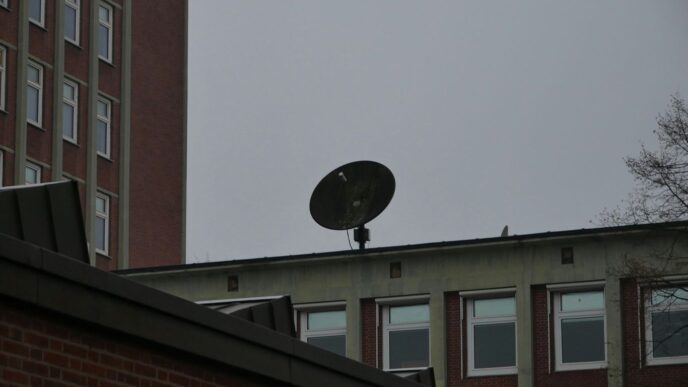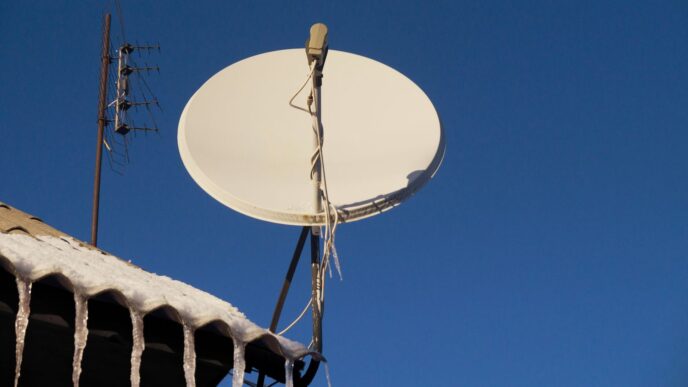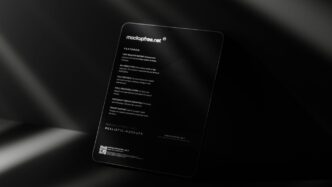Picking the right cell phone plan in 2025 can feel like a puzzle, right? With so many choices out there, it’s easy to get lost. Whether you’re a heavy data user, someone who travels a lot, or just need something basic without breaking the bank, finding the best cell phone service in the US for your specific needs is totally doable. We’ve looked at a bunch of plans to help you figure out which one fits you best, saving you time and maybe even some cash.
Key Takeaways
- Mint Mobile’s Unlimited Plan is a top pick for overall value, offering a good amount of data and using T-Mobile’s network for solid coverage.
- For those on a tighter budget, Mint Mobile also has a 5GB plan that’s super affordable for light users.
- Visible’s Unlimited Plan is a strong contender if you need unlimited data and don’t want to worry about hitting a limit.
- AT&T’s Unlimited Starter SL plan is a good choice if you’re looking for a family plan that balances cost and features.
- When considering the best cell phone service in the US, always check network coverage in your specific area and compare data needs against plan costs.
1. Best Overall Phone Plan: Mint Mobile Unlimited Plan

When you’re trying to figure out the best phone plan, it can feel like a lot. You want good service, enough data, and you don’t want to spend a fortune. That’s where Mint Mobile’s Unlimited Plan really shines. It hits that sweet spot of giving you a lot of data without breaking the bank, and it uses T-Mobile’s network, which is pretty solid across the country.
Mint Mobile’s Unlimited Plan is a top pick because it offers a generous amount of data at a price that’s hard to beat, especially if you’re willing to pay for a few months upfront.
Here’s a quick look at what you get:
- Data: You get unlimited data, but it’s good to know that after you use 40GB, your speeds might slow down a bit. This is pretty standard for most unlimited plans, though.
- Hotspot: Need to connect your laptop or tablet? This plan includes 10GB of data for mobile hotspot use, which is handy when you’re on the go.
- Video Quality: Just a heads-up, video streaming is capped at 480p quality. It’s fine for watching on your phone, but don’t expect super high-definition movie nights.
- Network: Mint Mobile runs on T-Mobile’s network, so you’re getting access to their wide coverage, including 5G in many areas.
Pricing Tiers:
Mint Mobile likes to reward you for buying in bulk. You can choose from a few different payment options, and the longer you commit, the lower your monthly cost:
- 3-Month Plan: Around $40 per month.
- 6-Month Plan: Around $35 per month.
- 12-Month Plan: Around $30 per month.
So, if you can swing paying for a full year, you lock in the best monthly rate. It’s a bit of a commitment, but for many people, the savings are totally worth it. It’s a straightforward way to get a lot of phone service without the usual high price tag.
2. Best Value Phone Plan: US Mobile Unlimited Starter Plan
If you’re trying to keep costs down without sacrificing too much, US Mobile’s Unlimited Starter Plan is a solid choice. It really hits that sweet spot between price and what you get. For just $25 a month, you get unlimited talk, text, and data. That’s pretty hard to beat when you look at what other companies are charging.
What makes this plan stand out is the amount of high-speed data they give you. You get a generous 35GB of data that’s prioritized, meaning it shouldn’t slow down too much even when the network is busy. Plus, there’s a 10GB hotspot allowance, which is handy if you need to connect another device like a tablet or laptop for a bit. They use the networks of the big carriers, so coverage is generally good across the country.
Here’s a quick rundown:
- Price: $25 per month
- High-Speed Data: 35GB (priority data)
- Hotspot Data: 10GB
- Network: Uses major carrier networks for coverage
Now, it’s not perfect. Once you use up that 35GB of high-speed data, your speeds will drop to 1Mbps. That’s usually fine for basic stuff like checking email or light web browsing, but streaming video or downloading large files might get a bit slow. Still, for the price, it’s a really good deal for most people who aren’t constantly streaming or downloading huge amounts of data.
3. Best Unlimited Plan: Visible’s Unlimited Plan
If you’re someone who just wants unlimited data and doesn’t want to think too hard about it, Visible is a pretty solid option. They’re actually owned by Verizon, so you’re getting service on a really strong network.
Visible has a few plans, but the one that really hits the sweet spot for most people is the Visible Plus plan at $35 a month. It gives you unlimited data, which is great, but it also comes with some nice extras. You get access to Verizon’s faster 5G network, called Ultra Wideband, where it’s available. Plus, you get 50GB of high-speed data for your phone, and you can use your phone as a hotspot with high-speed data too. It’s not unlimited hotspot data, but the speed is decent.
Here’s a quick look at what makes Visible Plus stand out:
- Unlimited talk, text, and data: This is the main draw, obviously. No more worrying about hitting a limit.
- Access to Verizon’s Ultra Wideband 5G: When you’re in an area with this faster 5G, you’ll be able to use it.
- 50GB of high-speed data for phone use: This is a generous amount for most people’s daily needs.
- Mobile hotspot with high-speed data: You can share your connection with other devices.
- Taxes and fees are included: What you see is what you pay, which is a nice change from some other carriers.
They also have a cheaper plan for $25 and a more feature-packed one for $45, but for a good balance of price and features, the $35 Visible Plus plan is hard to beat if you just want unlimited data without a lot of fuss.
4. Best Family Plan: AT&T Unlimited Starter SL

When you’ve got a whole crew to keep connected, finding the right family plan can feel like a puzzle. You want good service for everyone without breaking the bank, right? Well, AT&T’s Unlimited Starter SL plan is a solid contender for families looking for a balance of cost and features. It’s part of AT&T’s "Unlimited Your Way" setup, which is pretty neat because it lets you mix and match different unlimited plans for each person on your account. So, if one family member needs more data or perks, they can get a different plan, while others stick with the Starter SL. This flexibility can really help manage costs.
For a family of four, you’re looking at around $41 per line each month, totaling $164 for the whole group. That’s a pretty competitive price, especially when you consider the discounts you get for adding more lines. It’s generally less than what some other big carriers charge for similar setups. Plus, each line gets a decent chunk of hotspot data – 30GB, to be exact. And don’t worry too much about hitting data limits; your speeds usually won’t get slowed down unless you’ve used a whopping 75GB in a month. That’s a lot of data for most families’ everyday use.
Here’s a quick look at what you get:
- Customizable Plans: Mix and match Starter, Extra, and Premium plans across family members.
- Multi-Line Discounts: Save more as you add more lines to your account.
- Generous Data: Each line includes 30GB of hotspot data.
- High-Speed Data Cap: Speeds are generally not slowed unless you use over 75GB per month.
- Coverage: AT&T is known for having reliable network coverage across the US.
While it might not come with all the bells and whistles of the absolute top-tier plans, the AT&T Unlimited Starter SL offers a really good deal for families who need dependable service and a good amount of data without paying a premium.
5. Best Plan for International Travel & Roaming: Verizon Unlimited Ultimate Plan
If you’re someone who travels a lot, either for work or just for fun, keeping your phone connected can be a real headache. You’ve probably seen those crazy roaming charges pop up on your bill after a trip. Well, Verizon’s Unlimited Ultimate Plan is designed to make that whole process a lot less stressful. This plan really shines when you’re outside the US.
With this plan, you get unlimited talk, text, and data within the US, which is pretty standard. But the real magic happens when you cross borders. You get unlimited talk and text not just in Mexico and Canada, but in over 210 other countries too. That’s a huge number of places where you can chat and text without worrying about extra fees. Plus, you get high-speed data while you’re roaming, so you can actually use your phone for more than just basic calls and texts.
Here’s a quick rundown of what makes it good for travelers:
- Global Talk & Text: Unlimited calls and texts in over 210 countries, plus Mexico and Canada. No more guessing if a text will cost you extra.
- High-Speed Roaming Data: You get high-speed data when you’re abroad, so you can use maps, check emails, or even video call home without lag.
- Verizon Network: You’re on Verizon’s network, which is known for pretty solid coverage across the US and in many international spots.
Now, it’s not the cheapest plan out there. You’re paying a premium for these international perks. But if you travel frequently and need reliable service everywhere, the convenience and peace of mind might just be worth the extra cost. It simplifies things a lot, so you can focus on your trip instead of your phone bill.
6. Best Plan for Light Users: Tello Mobile Prepaid 1 GB
If you’re someone who barely touches their phone’s data or mostly relies on Wi-Fi, Tello Mobile’s Prepaid 1 GB plan is a real find. Seriously, it’s hard to beat the price. You get unlimited talk and text, which is pretty standard these days, but the kicker is that tiny 1 GB of data for just $5 a month. It’s perfect if you just need a little something for when you’re out and about, maybe for checking maps or sending a quick email.
This plan runs on T-Mobile’s network, so you’re generally going to get decent coverage across the US. It’s a no-fuss kind of deal – no contracts, no weird hidden fees popping up later.
Here’s the breakdown:
- Price: $5 per month
- Data: 1 GB high-speed data
- Talk & Text: Unlimited
- Network: T-Mobile
Now, it’s not for everyone, obviously. If you stream a lot of videos or find yourself constantly downloading things, that 1 GB will disappear faster than free donuts at a meeting. And don’t expect any international roaming included here; you’ll need to look elsewhere for that. But for a backup phone, a kid’s first phone, or just your own personal low-usage line, it’s a solid, super affordable choice.
7. Best Budget Phone Plan: Mint Mobile’s 5GB Plan
If you’re trying to keep your monthly phone bill as low as possible, Mint Mobile’s 5GB plan is a really solid choice. It’s designed for folks who don’t use a ton of data but still want reliable service. You get unlimited talk and text, plus 5GB of high-speed data each month. This plan is a fantastic option if you can swing paying for a full year upfront, which brings the cost down to just $15 per month.
Mint Mobile operates on the T-Mobile network, so you’re getting pretty good coverage across the country, including access to their 5G network where available. It’s a bit different from other carriers because they ask you to pay for your service in blocks of three, six, or twelve months. The longer you commit, the cheaper it gets per month. So, while the initial payment might seem a little high because you’re paying for several months at once, the monthly rate is super low.
What happens if you go over your 5GB limit? Don’t panic. Mint doesn’t hit you with extra charges. Instead, they just slow down your data speeds for the rest of the month. It’s not ideal, but it means you won’t get any surprise fees on your bill. This makes it a predictable and budget-friendly choice.
Here’s a quick look at how the pricing breaks down:
- 3-Month Plan: $25/month ($75 total)
- 6-Month Plan: $20/month ($120 total)
- 12-Month Plan: $15/month ($180 total)
Keep in mind that these prices are introductory for the first three months. To keep the $15/month rate on the 12-month plan, you need to pay the full $180 upfront. It’s a commitment, for sure, but if you’re looking for the absolute cheapest way to get decent cell service on a major network, this is hard to beat.
8. Best Plan for Coverage: T-Mobile Essentials Saver
When you’re trying to figure out which cell phone plan is best, sometimes the most important thing is just making sure you can actually get a signal where you live and work. T-Mobile’s Essentials Saver plan is a solid choice if reliable coverage is your top priority, especially if you’re not looking to break the bank.
This plan gives you a good chunk of high-speed data – 50GB, to be exact – before they start slowing things down. That’s usually more than enough for most people’s daily use, like browsing, social media, and streaming. Plus, it includes unlimited talk and text, which is pretty standard these days but still good to have.
One of the neat things about this plan is the included hotspot usage. Now, it’s not going to be blazing fast – think 3G speeds – so it’s best for quick emails or checking something simple, not for heavy-duty work or streaming movies on your laptop. If you need a faster hotspot, you might need to look at a different plan.
Here’s a quick look at what you get:
- 50GB of premium data: This means your data speeds are a priority up to this limit.
- Unlimited talk and text: Standard, but always appreciated.
- Unlimited mobile hotspot (3G speeds): Good for basic tasks on other devices.
- Basic international perks: You get unlimited texting from the US to over 215 countries and calls at a set rate. Roaming in Canada and Mexico is included, but data speeds there are quite slow.
While T-Mobile’s coverage is generally strong, especially in cities, it’s worth noting that it can sometimes be a bit weaker in very rural areas compared to some other carriers. So, if you spend a lot of time way out in the sticks, it’s always a good idea to check coverage maps for your specific locations. But for most everyday users, the Essentials Saver plan offers a good balance of coverage and cost.
9. How To Choose A Plan
Picking the right cell phone plan can feel like a puzzle, right? There are so many options out there, and they all promise the moon. But honestly, it boils down to a few key things that really matter for your everyday use.
First off, think about how much data you actually use. Are you constantly streaming videos, playing games online, or video calling friends and family? If so, you’ll want a plan with plenty of high-speed data. On the flip side, if you’re mostly on Wi-Fi at home or work and only use your phone for texts and occasional browsing when you’re out, a smaller data package might be perfectly fine and save you some cash.
Next up is coverage. It doesn’t matter how cheap a plan is or how much data it offers if you can’t get a signal where you need it most. Check out coverage maps for the carriers you’re considering, and don’t be afraid to ask friends or neighbors what they use and how reliable it is in your area.
Here’s a quick look at how the major networks generally stack up:
- T-Mobile: Often has strong 5G in cities, with improvements happening in rural spots.
- Verizon: Known for wide, dependable coverage across both urban and rural areas.
- AT&T: Offers a good mix of 5G speeds and reliable LTE, especially outside major metro areas.
Your budget is obviously a big one. Decide what you’re comfortable spending each month. Sometimes, paying a little more gets you a lot more data or better perks, but it’s about finding that sweet spot for your needs. Also, look out for hidden fees – transparency is key here.
Finally, consider the extras. Do you need a hotspot for your laptop? Do you travel internationally often? Some plans throw in free streaming subscriptions or better international roaming options. These perks can make one plan stand out over another, even if the core data and coverage are similar.
10. What To Look For In A Cell Phone Plan
Picking the right cell phone plan can feel like a puzzle, right? There are so many options out there, and they all promise the moon. But really, it boils down to a few key things that make a big difference.
First off, think about your data. How much do you actually use? If you’re constantly streaming videos, playing games, or video calling, you’ll need a plan with plenty of data. On the flip side, if you’re mostly on Wi-Fi and just use your phone for texts and occasional browsing, a smaller data package might be perfectly fine. Don’t pay for data you won’t use.
Next up is coverage. It doesn’t matter how cheap a plan is if you can’t get a signal where you live or work. It’s a good idea to check coverage maps for the carriers you’re considering. Asking friends and neighbors in your area is also a smart move; they’ll give you the real scoop on how reliable a network is.
Then there’s the price. Set a budget for yourself. While some plans come with a ton of extras, make sure those extras are things you’ll actually use. Sometimes, a simpler plan is a better deal. Always look for transparent pricing to avoid surprise fees.
Here are some things to keep in mind:
- Data Needs: Figure out your monthly usage. Are you a heavy streamer or a light browser?
- Network Coverage: Check if the carrier has a strong signal in the places you go most often.
- Budget: Decide what you can comfortably spend each month.
- Contract vs. Prepaid: Do you want the flexibility of no contract or a prepaid plan, or are you okay with a contract for potential device deals?
- Extra Perks: Look for things like hotspot data, international calling options, or included streaming services if they add value for you.
Many plans offer discounts if you add more lines, which can be a great way to save if you’re looking for a family cell phone plan. Also, keep an eye out for carrier promotions when switching; they can sometimes offer significant savings.
Wrapping It Up
So, picking the right cell phone plan for 2025 doesn’t have to be a headache. We’ve looked at a bunch of options, from those that give you tons of data to ones that are super easy on your wallet. Remember to think about how much data you actually use, where you spend most of your time (so you can check coverage), and what your budget looks like. Don’t just stick with what you’ve always had; there might be a much better deal out there waiting for you. Take a little time, compare things, and you’ll likely find a plan that fits your life perfectly without costing too much.
Frequently Asked Questions
How do I know how much data I actually need?
Think about what you do on your phone. If you mostly use Wi-Fi at home and work, you might not need much data. But if you stream lots of videos, play online games, or video chat often, you’ll want a plan with more data. Checking your phone’s settings can often show you how much data you’ve used in past months.
What’s the difference between a contract plan and a no-contract plan?
A contract plan usually means you’re locked in for a certain amount of time, often a year or two. You might get a deal on a phone, but switching is harder. No-contract plans, often called prepaid plans, let you pay month-to-month and switch whenever you want. They offer more freedom.
Are cheaper phone plans always worse?
Not at all! Many smaller companies use the same cell towers as the big companies but offer plans for less money. You just need to make sure they have good service where you live and work. Sometimes, these cheaper plans might have less high-speed data or fewer extra features, but they can be a great way to save money.
What does ‘coverage’ mean for a cell phone plan?
Coverage means how well you can get a signal in different places. It’s important to check if a phone company has strong service in the areas you visit most, like your home, work, or places you travel to. You can often check their coverage maps online.
What are ‘perks’ in a cell phone plan?
Perks are extra benefits that come with a plan, like free access to streaming services (like Netflix or music apps), extra data for using your phone as a Wi-Fi hotspot for other devices, or discounts for calling or using data in other countries. They can add extra value to your plan.
Is 5G important for my cell phone plan?
5G is the latest generation of mobile network technology, offering faster speeds and better performance. If you have a 5G-compatible phone and live in an area with 5G coverage, it can make things like downloading files or streaming videos much quicker. Many new plans include 5G.














